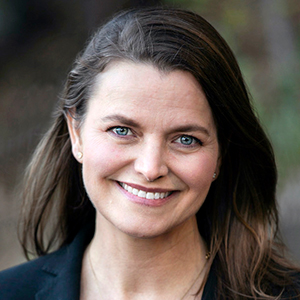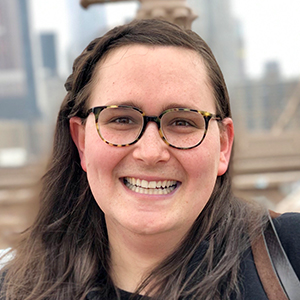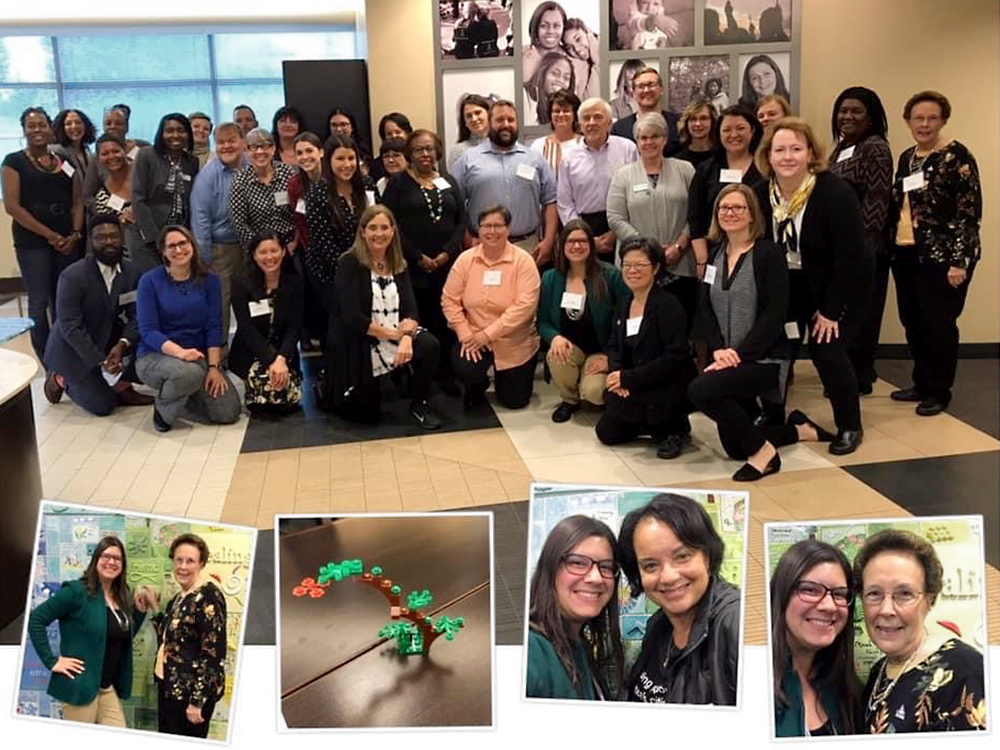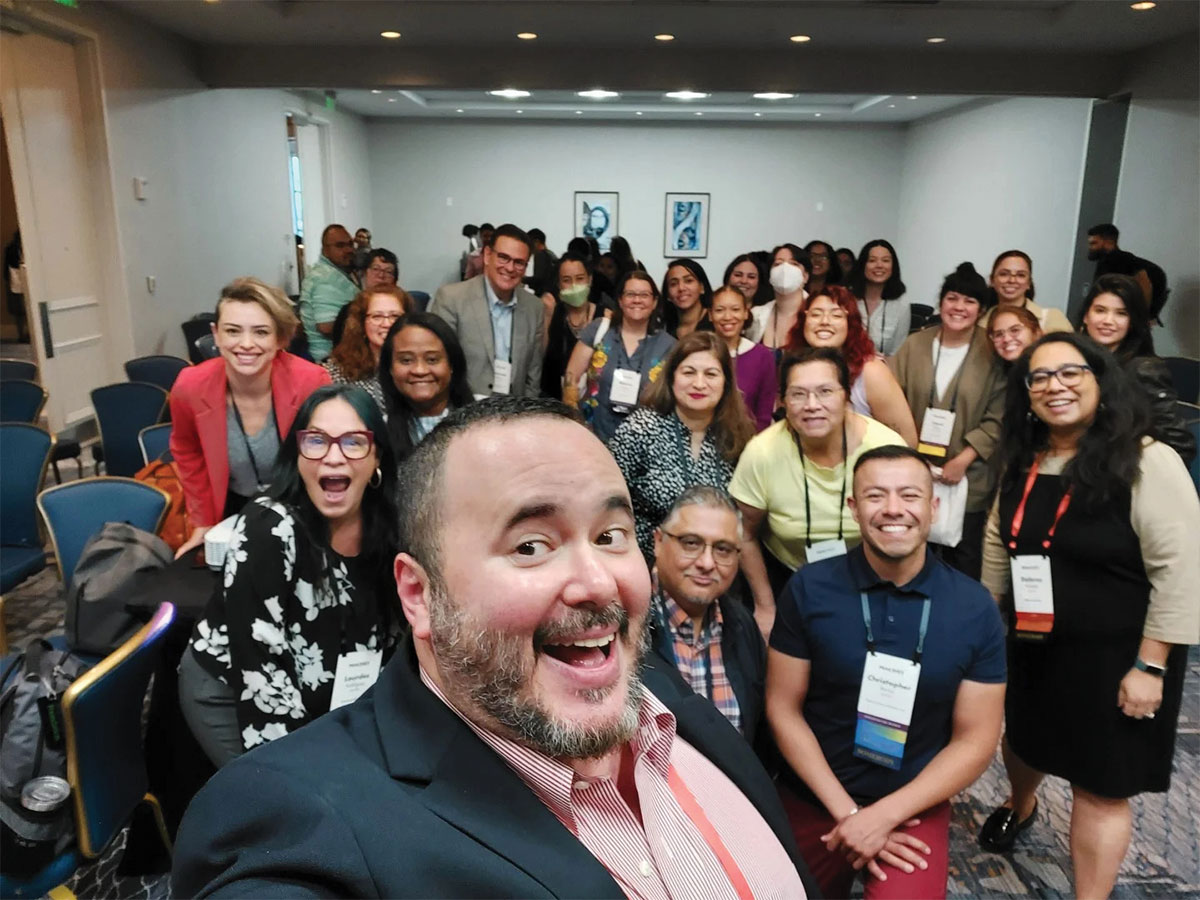
For many, grants management was an unexpected detour along their intended career journey, but it’s a path they ultimately decided to continue traveling. It can be a lonely road, and one where a professional can feel disconnected from peers, misunderstood, and excluded from strategy and decision making. But dynamics within funding institutions are slowly changing, and the unique position in which grants managers sit is now expanding such that their increasing influence is driving change.
We recently asked Rebecca Van Sickle, manager of 1892 consulting and PEAK’s 25th Anniversary Committee co-chair, to lead a roundtable with four PEAK members to explore how they each discovered grantmaking and grew within the field, and navigated these challenges. The following are highlights of the conversation with Pam Foster, chief operating officer of Co-Impact; Dan Gaff, director of grants management at the May and Stanley Smith Charitable Trust; Quinn MacNichol, grants manager at Group Health Foundation; and Tiffany Price, program officer at Pacific Foundation Services. Their dialogue reveals how far grants management has come and the ways in which others in the profession can fully leverage the vast possibilities of the role.
Van Sickle: Getting into philanthropy can be a difficult journey. I’d love to hear about your journeys and the winding paths you each took to get to philanthropy.

Price: I had been doing education policy research for about six years and really was looking for a way to do something more directly connected to the communities I was living in. I stumbled upon a multicultural fellowship program that was being offered at the San Francisco Foundation. I applied and was ultimately selected to be a fellow under the education program area, and I was able to experience grants management [along] with exposure to the board and nonprofit leaders. It really fleshed out my understanding of the field, and I built the relationships that ultimately led to me going straight into a job for 12 years at the Kapor Center. My first title was grantee advocate, which I thought was the coolest title ever.
Foster: When I started in philanthropy in the mid-90s, the grants management function didn’t have a common name across the sector. Looking back over the 25 years I’ve been in this space, grants management has since become a particular specialization. And because it is fairly unique to philanthropy, and new leaders often come from outside the sector, it ends up being a function that you have to explain—and sometimes justify—to new leadership more than should be the case, despite how critical it is. So, I know we’re here partially because PEAK has given us a common language—one that gives us the ability to advocate, to explain the function, and to articulate why we have to resource it and value it in our organizations.

MacNichol: In my first grants management job, I worked on a team that shared a lot of responsibilities, so I was a little bit program associate, a little bit grant program officer,and a little bit grants manager. And while I took on the bulk of the data work, we all played hybrid roles. It’s been a really interesting transition to move to a foundation that is much larger, but also where I am not doing all of the roles, but I am specifically focused on grants management and also where I’m the only grants manager on the team.
Gaff: Grants managers often have a diverse background both in terms of their skill sets and how they are contextualized within their organization, whether they’re with legal, or finance, or programs or operations. For example, so many people in this field have a background in the arts, and because they’ve come to grants management by following a winding path, and because their relationship to their organization may differ from organization to organization, that just makes the field so much richer. You always have something to learn from other grants managers.
Price: Since I had worked so long at one foundation wearing the many hats like Quinn, I had never experienced working in an environment where there was a large team of grants managers. In my current role, I see that a lot of the program officer staff started in grants management. In this particular work environment, it feels like grants managers are allowed to engage with the entire grantmaking process and grow professionally. If you want to become a program officer, you can become a program officer, and you can do it at the same company. I think having an overwhelming number of program officers with grants management backgrounds leads to much smoother grantmaking processes. They create space for you to learn and grow and thrive and have influence throughout the entire company. Where grants managers often may be minimized or ignored, it’s refreshing to feel like it’s cultivated here.

Van Sickle: I’m reflecting on the idea of grants management professionals as advocates for themselves, for the profession, and for their colleagues, peers, and grantees. And I’m also reflecting on ways of constantly looking at and improving your process, your relationships, or your internal work or systems. That’s the practice and the culture of the foundation and a lot of that sits in this realm of the grants management professionals. So, I would love to hear more from all of you about how you’re defining power and influence in philanthropy.
Foster: Access to data gives grants managers a tremendous ability to influence everything around our organizations. We are able to harness that information to tell the stories that are embedded in the data, to use that information to shine a light on challenges and potential solutions across the organization, to give our program colleagues the information they need to make informed decisions about their grants. This is a great space for grants managers to occupy and it’s been a key area for me as I think about how I’ve been able to navigate and advocate for my team and for my own role.
Van Sickle: And yet some grants managers feel uncomfortable thinking of themselves as having power. MacNichol: I think that it’s essential that we talk about power and understand the ways that power shows up in our work, the way power flows between grantees and funders and the way that power flows between funders and across philanthropy networks. If we want to do racial and social justice work in philanthropy, power dynamics are one of the most important things we need to be talking about. And I absolutely agree with what Pam said about data being one of the strongest tools we have. The data we collect is a reflection of our organizational values, and it’s also an important tool for holding ourselves and the sector accountable. Data helps us understand if we are reaching and serving the communities we seek to support.
Price: Understanding one’s personal power is really important. For example, when I had a lot of autonomy in creating systems, I knew that I could just change a grant application without a lot of input from others. If I saw that we were getting grant applications that were not in alignment with the mission, I could go to the website and tweak the language there. Understanding your power and understanding how it impacts outcomes is critical, no matter what your position is. It’s also important knowing how you can leverage your role to influence others. Because of my background in grants management and my affinity for all things process related, I will forever and always be an advocate for grants managers. No matter where I find myself in philanthropy, I will create space for them to have a voice.
And sometimes power depends on who delivers the message—who has that power and strength behind their voice to determine outcomes. For example, many of the things the current DEI movement in philanthropy is pushing now have been talked about for decades (e.g., Project Streamline) and the change largely hasn’t happened. The message is the same, the data is the same, but the locus of power delivering the message has changed from grants management to more traditional philanthropic leadership—the CEOs, board members, and program officers. Will we see shifts now? I don’t know.

Gaff: To Quinn’s point, our grants associates and I are the ones who answer the phone and receive the general inquiry emails. We’re often the first people who new grantseekers approach, so I love thinking of the role as customer support. I would say this to a new person in the field, Even though your role may not be a “leadership role,” you probably have a lot more power and influence than you might think because, as my colleagues have mentioned, you are at the nexus of data, policies, procedures, and practices, and you are positioned to help your organization achieve its mission.
MacNichol: Grants managers are also uniquely equipped to operationalize more trusting and equitable grantmaking. While philanthropy is increasingly articulating justice, equity, and accessibility as important values, the sector continues to struggle to adjust practice and behavior to meet these values. As grants managers, we can offer expertise and leadership in our organizations to modify things like our data models, application practices, and review processes. We play a powerful role in technical and operational changes that allow funders to invest in better alignment with their values. We need to claim and own that space as experts and partners in making change around who gets resources and who is seen as qualified for philanthropy’s support.

Foster: One shift I’ve seen in this space over the years is the recognition of the importance of the transparency and clarity grants managers create around the processes and making sure materials are accessible to everybody within and outside of our organizations. Grants managers’ role is, in fact, about sharing power across the organization. I had a colleague with this mantra: “To be clear is to be kind.” And I feel like that’s a tagline for anybody who works in grants management. Being clear with everybody—internal colleagues and especially grantees—about grants management practices, policies, timelines, etc. is being kind and thoughtful and a good partner.
Price: A lot of the conversations around grants management happen with folks in grants management, and they’re siloed from the conversations that happen within the program team. My hope is that more conversations about grantmaking and philanthropy bring these teams together, along with finance and HR. We need to talk more so that systems can come together in logical ways faster, so that philanthropy can thrive and have more impact in communities.
Foster: I always tell anybody coming into philanthropy to find your people—and PEAK is a great place to do that. Being the head of grants management in a large foundation is a lonely position. Like Quinn, I always had check-ins with everybody in my organization all day, every day, but there was nobody else who understood exactly what I was doing. Not even my team. Until I found my network of the heads of grants management in other large foundations. It was with them that I laughed, learned, and improved as a grants manager and as a leader.
Gaff: When I was having conversations with our former CEO about elevating my position to director, I used many of PEAK’s resources to articulate what a director of grants management does—and what I had been doing for years! And so, I credit PEAK for helping me in my career on a practical level. I’ll never forget my very first PEAK meeting through the Northern California chapter and how the chapter leaders were super welcoming and generous with their time. At that time, I was a grants management department of one and felt quite isolated. Having those meetings, and being so welcomed meant so much, and I took advantage of a volunteer opportunity right away.
Price: What PEAK did for me early on, particularly as part of the conference experience, was validating the importance of just sharing my personal experience and acknowledging the power of my personal journey. So, it again highlighted the power of just sharing what you’ve been doing, with peers. That, in and of itself, is a powerful start to influence the game of philanthropy.







